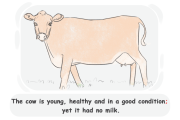Colons and Semicolons
In this lesson you will learn about colons and semicolons, used to connect ideas and lists. Practice with simple examples and beginner exercises.

What Is a Colon?
A colon is a punctuation mark consisting of two dots (:). It is used to introduce a list, explanation, or example, or to separate two clauses when the second clause explains or illustrates the first.
Colon: Uses
We can use colons to introduce:
an emphasis
a dialogue
a list
a title
independent clauses
Using Colons for Emphasis
When you are using a colon to emphasize the noun following it, the first letter after the colon is only capitalized if it is a proper noun. Here are the examples:
Her only love was: Marco Danio.
I only wanted to enter: the university.
Using a Colon to Introduce a Dialogue
A dialogue must follow a colon and the sentence after the colon has to be capitalized at the beginning. Here are the examples:
Marco: I am not going to leave you alone.
Sarah: Excuse me! Aren't you the guy who cheated on me?
Using a Colon to Present a List
When we want to present a set of items on a list, we have to introduce them with a colon. The first letter after the colon is not capitalized unless it is a proper noun. Check out the examples:
We should buy: butter, cheese, milk, and sugar.
I invited: Sam, Alison, Ellen, and Pam.
Using a Colon in a Title
We can use a colon before a title. Usually, titles are proper nouns and thus capitalized at the beginning. Here are the examples:
She wrote: Harry Potter.
She played: Gia.
Independent Clauses
Colons can be used to separate two independent clasues. Remember that you can use colons to join only two independent clauses and not any more. Also, the first letter after the colon should not be capitalized.
Never forget my first rule: new is always better.
The world is a stage: play your role well.
Other Uses
A colon can be used on the following occasions as well. The only difference is that these uses are less common. Check the list:
to join sentences
to express time


Using a Colon to Join Sentences
Sometimes, when the second sentence presents information or a definition related to the first sentence, we can use a colon between the two sentences. Here are the examples:
She acted like an ocean: calm, deep, and cold.
We used the third formula: the one in which we would have a purple liquid.
Using a Colon to Indicate the Time
When it comes to time, colons are used with numbers to separate the units of time. Here are the examples:
04:52:32 → four hours and fifty-two minutes and thirty-two seconds
15:21:45
When Not to Use a Colon
There are some occasions in which you are not allowed to use a colon. For example:
You cannot use a colon between an object or a complement and the verb. Here are the examples:
❌She is: wonderful.
❌Sarah called: her mother as soon as she got to the station.
Also, we cannot use a colon between a preposition and its object. Check these examples out:
❌Do not put your weapon on the: table.
❌The books are above: the shelves.
When we are using words and phrases like such as, including, especially, and similar phrases, you should not use a colon. Here are the examples:
❌We bought groceries such as: nuts, sweets, etc.
✔ We bought groceries such as nuts, sweets, etc.
❌Do not use salty foods including: salt, salty nuts, etc.
✔Do not use salty foods including salt, salty nuts, etc.
When we are reporting a direct or an indirect speech we never use a colon. Here are the examples:
❌She said: "I am tired".
✔She said, "I am tired."
direct speech
❌She said: she was tired.
✔She said she was tired.
indirect speech
What Is a Semicolon?
A semicolon looks like a comma with a period above it. The punctuation is (;).
Semicolon: Uses
Here are the uses of semicolons in writing:
Using Semicolons to Join Sentences
We can use a semicolon to link two independent clauses. In this case, we can link two independent clauses with similar ideas. Here are the examples:
She was still sick; she was constantly sneezing.
We talked to the manager; he insisted on considering the new policies.
When two independent clauses are linked by a conjunction or an adverb, you can use a semicolon before the conjunction or the adverb. Here are the examples:
We couldn't decide; however, she seemed determined.
They got caught; as a result, her mother raised the baby.
You can also use a semicolon if there is a coordinating conjunction linking two clauses preceded by a comma. Here are the examples:
He bought the sandwiches, drinks, and cookies; but he forgot to pick up the cake.
The cow is young, healthy and in a good condition; yet it had no milk.
In Lists
We could use a semicolon in lists when using a comma would cause confusion. Let's see in examples:
So far I've visited Dallas, Texas; Manhattan , New York; and Akron, Ohio.
You can get a pizza with bacon, cheese and corns; ham, cheese and pepper; or vegetables and cheese.
When Not to Use a Semicolon
A semicolon cannot be used when a dependent clause is linked to a dependent or an independent clause. In this case, a comma is used, not a semicolon. Here are the examples:
Since she was lost, her mother was worried sick.
Because of the wedding, we have spent so much money lately.
Comments
(0)